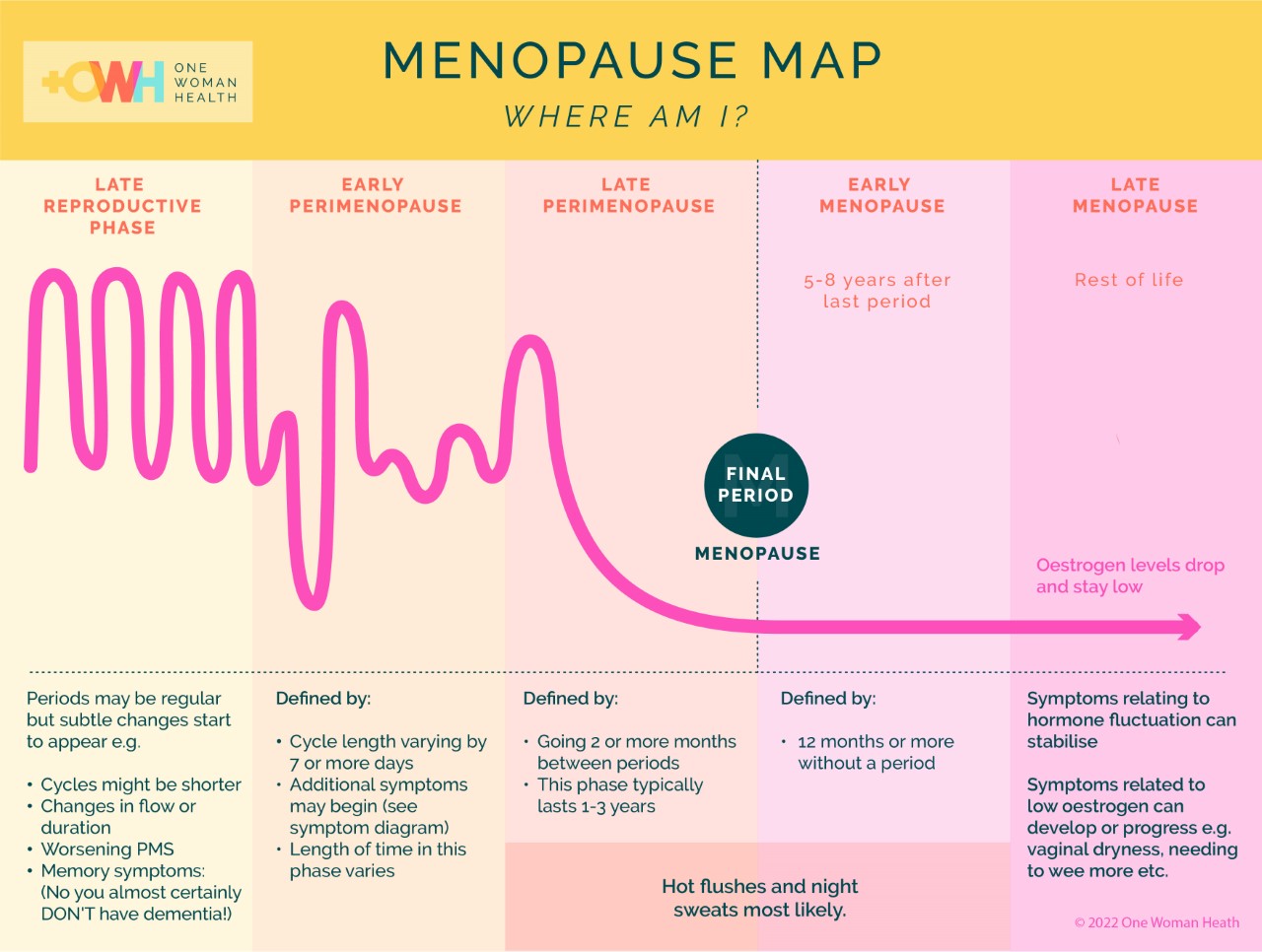
I’m often asked questions such as ‘Is it menopause? How do I know? What happens now? The menopausal transition isn’t like flicking a switch (oh no!). It’s a gradual journey that occurs over years.
To help you work out the answers to those questions and where you are in the process, I’ve created this Menopause Map. Getting an overview of the whole process can be a moment when things fall into place. It’s not mysterious anymore. Piece together what you’ve noticed, plot your position and see what’s coming up on the road ahead. As menopause campaigner Omisade Burney-Scott said ‘We are cartographers’. Our grandmothers and mothers may not have been in a position to help us, but it’s our generation’s duty to help other women understand this process.
In the chart above, the pink link represents cycling hormones. You can see that women flow through a series of stages as they get older, and these distinct stages were described by a scientific committee who identified different changes that occur marking milestones along the way. It’s important to remember that people move through at different rates, and not everyone gets every symptom, but this can still be a useful guide.
First signs of change: LATE REPRODUCTIVE PHASE
The first phase on this diagram shows that even when we’re having regular periods and may still be fertile, as we get older many women notice subtle changes to periods, mood or memory. Cycles often shorten slightly, difficulty finding the right word can creep in and PMS can last much longer.
Definitely perimenopausal: EARLY PERIMENOPAUSE
Things have moved on a step here. Your period may be 7 or may days late or early. Other symptoms may appear. If you had a blood test for FSH now (the hormone that drives the ovaries to go through their cycle) it may well be normal even though the perimenopause is definitely underway.
Eye of the storm: LATE PERIMENOPAUSE
Periods are now quite irregular, skipping 2 or more at a time. You’re not ovulating predictably and the ovaries aren’t producing so much oestrogen and progesterone. If you had a blood test now, an FSH test, it is more likely that it would be raised above 25 showing that the ovaries are not responding. Hot flushes and night sweats, if you get them, are most likely to appear around now and in the few years after the final period.
Crossing the line: MENOPAUSE
Your final period just finished. The word means no more than that! You won’t know it’s definitely the last one until 12 months have passed. In terms of symptoms, this can be a tricky time.
The new normal: POST-MENOPAUSE
Many women continue to experience symptoms after the final period, as hormone levels settle to their new low levels. Hot flushes and night sweats can be at their worst. With time, the picture tends to get better as you adjust to new lower-but-stable hormone levels, but how long that takes is different for everyone. Unfortunately, vaginal symptoms don’t tend to improve with time and become more likely the older we get.
HANG ON……. NOT SO FAST! What if I’m not having periods because of contraceptive medication such as the Mirena coil or progesterone-only pill?
You may have noticed that one of the main clues for each stage relates to periods. If certain medications have stopped your periods then we can’t use that information but we can still piece things together by looking at your other symptoms and interpreting that according to age. If you’re under 40, it’s one of the few times a blood FSH test can be helpful.

